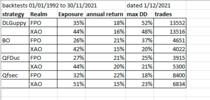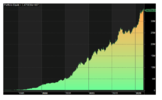MovingAverage
Just a retail hack
- Joined
- 23 January 2010
- Posts
- 1,315
- Reactions
- 2,565
The problem I have with this thread (this is not a personal attack) is that a lot of folks talk about testing over a period of time and generally the assumption is the longer the time frame the better. This is rubbish.
I bet if I was to say I did a backtest (over whatever time period you care to suggest--I don't care) and my back test executed 5000 trades who would suggest that is good (statistically relevant)?
I bet if I was to say I did a backtest (over whatever time period you care to suggest--I don't care) and my back test executed 5000 trades who would suggest that is good (statistically relevant)?





 I think someone else said it here a few posts back--human nature hasn't changed a lot
I think someone else said it here a few posts back--human nature hasn't changed a lot


